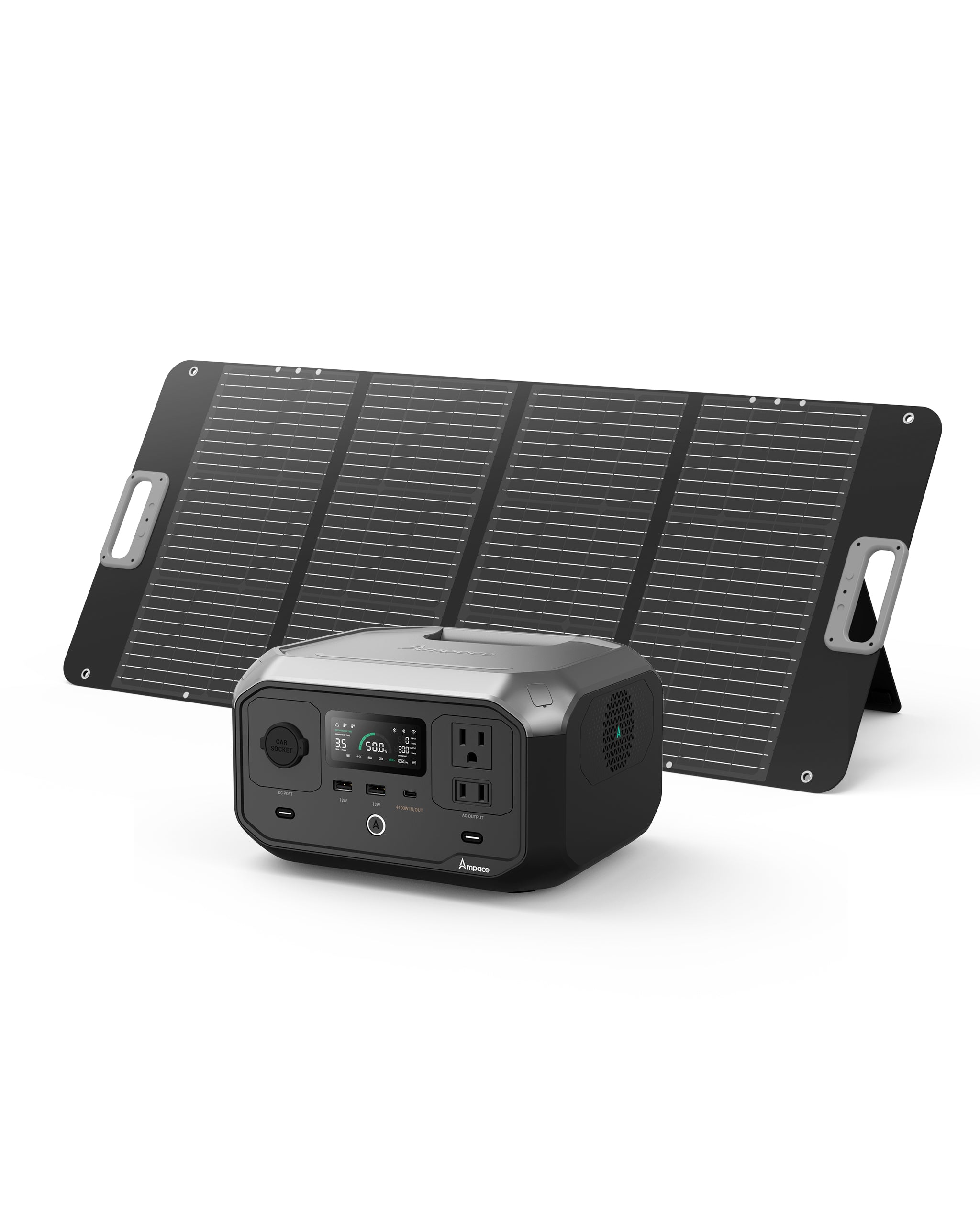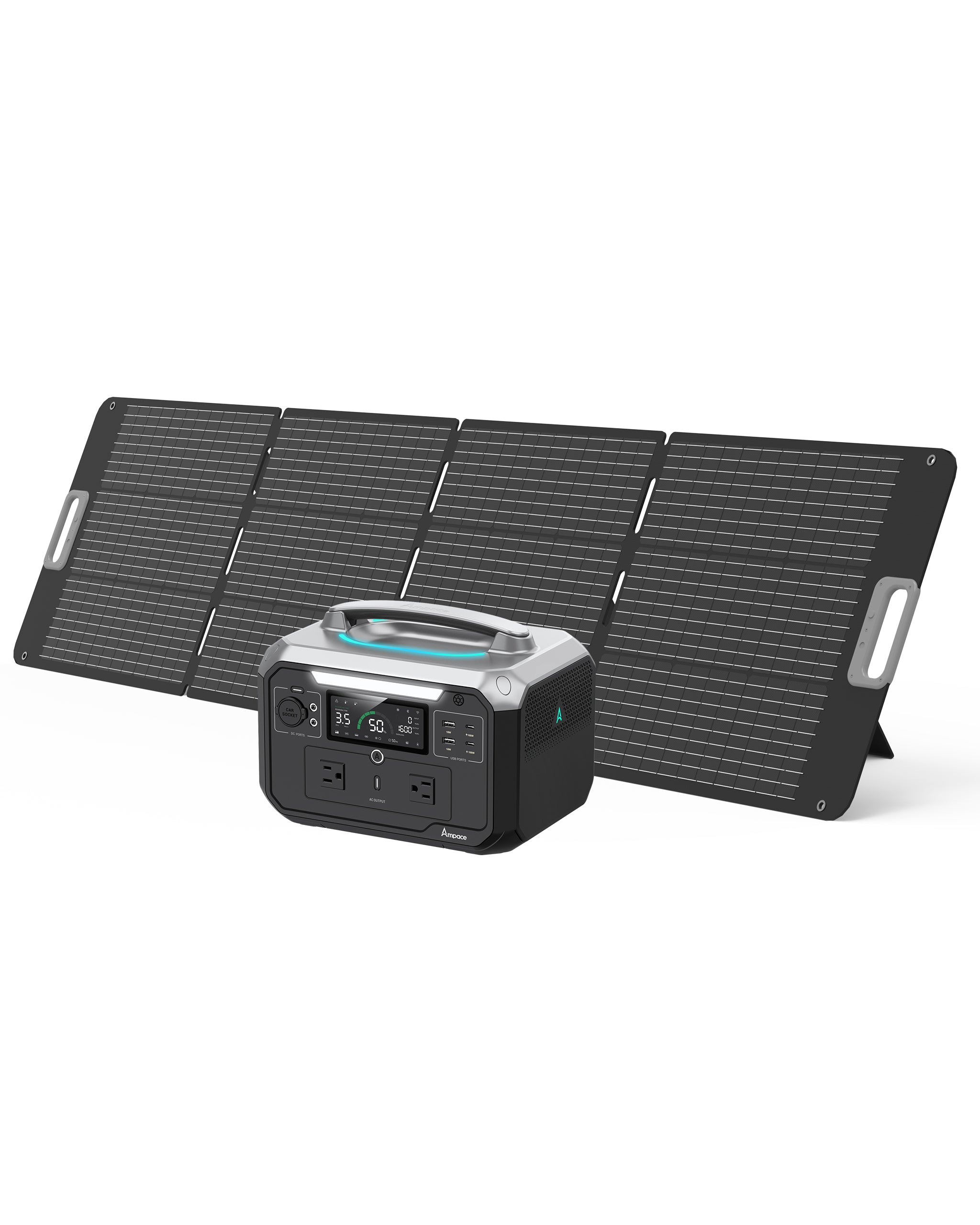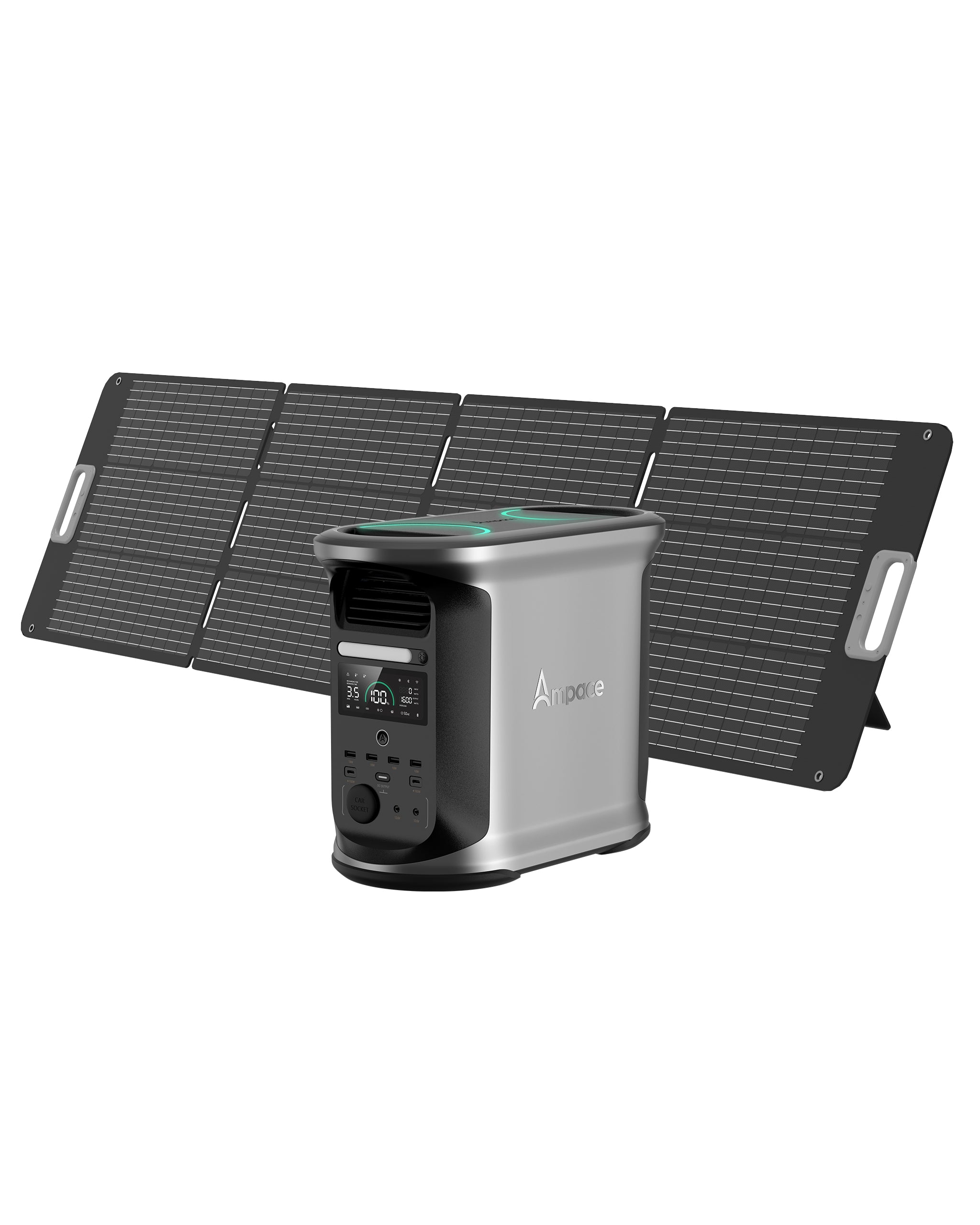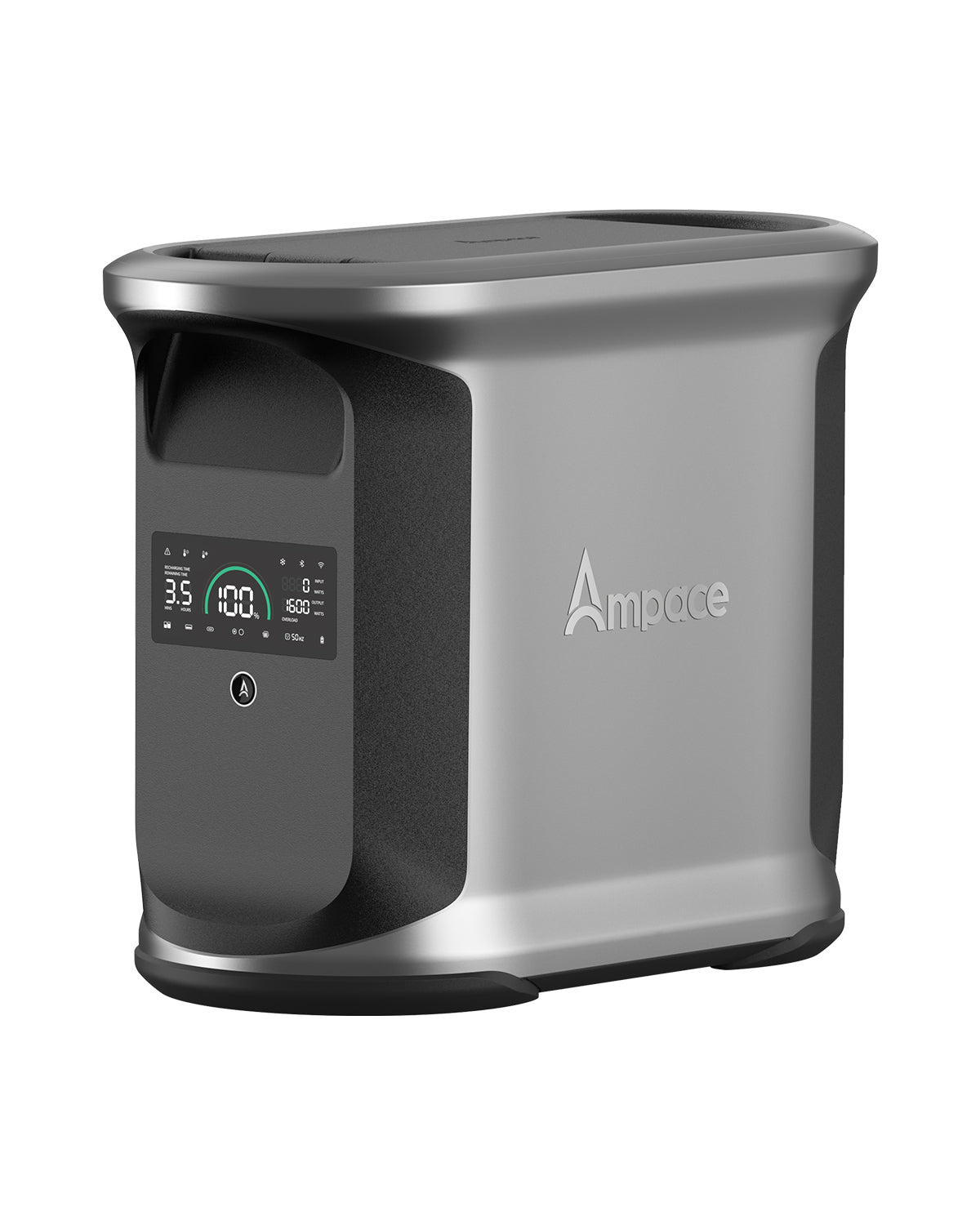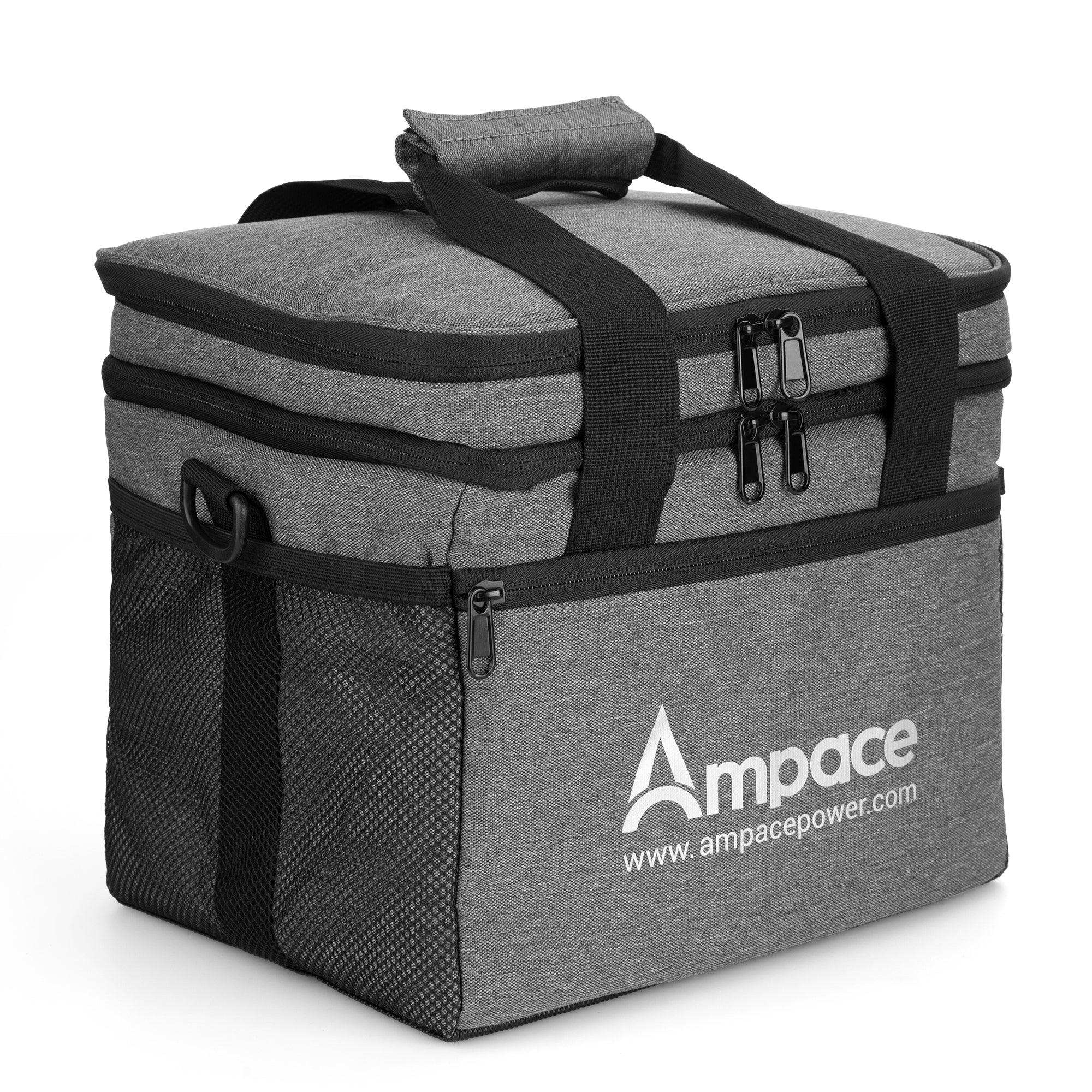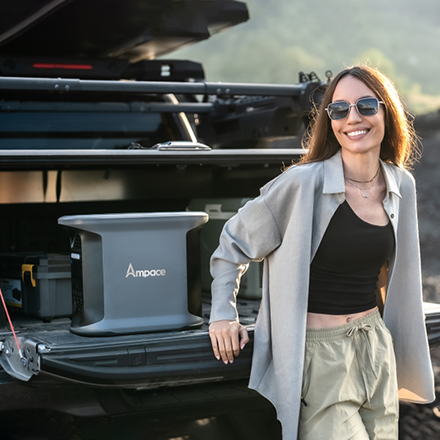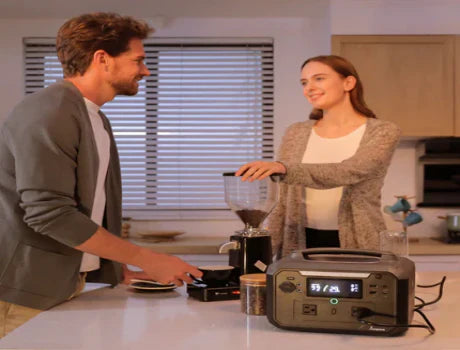What You Need to Know About Pure Sine Wave Inverters

Table of Contents
In this electricity-driven era, a stable energy supply drives life’s core needs. As an innovator in energy technology, Ampace commits to delivering efficient, reliable solutions. Today, we explore pure sine wave inverters, which convert direct current (DC) into high-quality alternating current (AC) while ensuring device stability and compatibility.
What is pure sine wave inverter?
Before diving into the details, you should first know that a pure sine wave inverter converts direct current (DC) into alternating current (AC) with a smooth sine waveform. This output closely matches the power from public grids, making it a high-quality and reliable electricity source. Next, we will explain the terms to you step by step.
What does pure sine wave mean?
A sine wave is a smooth, periodic waveform that represents the most natural and ideal state of alternating current (AC). Its characteristic is that the voltage changes over time in a continuous "S"-shaped curve, without abrupt changes or interruptions.
How does a pure sine wave inverter work?
An inverter sinusoidal (full sine wave inverter) replicates this waveform to convert direct current (DC) into high-quality alternating current, similar to the power provided by a household grid. This waveform is especially important for operating sensitive equipment, as it ensures the stability and safety of electrical devices.
Direct Current vs. Alternating Current
Direct current (DC) and alternating current (AC) are the two fundamental forms of electricity. Direct current maintains a constant direction of current flow and is typically provided by batteries or solar panels, making it suitable for low-voltage, small-scale devices.
Alternating current, on the other hand, periodically changes its current direction and voltage magnitude, serving as the standard form of power in electrical grids, ideal for long-distance transmission and high-power equipment. The role of an inverter is to convert DC into AC, and a pure sine wave inverter ensures that the output AC is of higher quality and closer to grid standards.

What is a Modified Sine Wave Inverter?
A modified sine wave inverter is a lower-cost type of inverter that converts DC into AC, but the output waveform is not a smooth sine wave. Instead, it produces an approximate square, step-like waveform. While it can meet the needs of some basic appliances, such as simple light bulbs or fans, when used with precision equipment, such as computers or medical equipment, it can cause instability and even damage the equipment.
Pure Sine Wave Inverters VS. Modified Sine Wave Inverters
Pure sine wave inverters and modified sine wave inverters are two common types of inverters, differing significantly in output waveform, performance, and application scenarios. Here’s a comparative analysis:
Output Waveform
- Pure: Outputs a smooth, continuous sine wave, almost identical to the waveform of grid power. This waveform is of high quality, close to ideal AC power.
- Modified: Outputs a stepped waveform that approximates a sine wave. While it can power AC devices, the waveform is less smooth and contains more harmonic components.
Applicable Devices
- Pure: Suitable for nearly all AC devices, including sensitive electronics (e.g., medical equipment, precision instruments, variable frequency motors, laptops). It causes no interference or damage to devices.
- Modified: Works well with simple appliances like resistive loads (e.g., light bulbs, heaters) and some basic motor-driven devices. However, for equipment requiring high-quality power (e.g., refrigerators, air conditioners, audio systems), it may cause noise, reduced efficiency, or even damage.
Efficiency and Performance
- Pure: Typically offers higher efficiency (usually above 90%), excellent device compatibility, low noise during operation, and longer lifespan.
- Modified: Slightly lower efficiency (typically 80-85%), as the impure waveform may generate additional heat or electromagnetic interference in some devices.
Price
- Pure: More complex manufacturing process, higher cost, and generally more expensive than modified sine wave inverters.
-
Modified: Simpler design, lower cost, and more budget-friendly.
Usage Scenarios
- Pure: Recommended for solar systems, camping, home backup power, or critical equipment requiring long-term operation.
- Modified: Suitable for short-term use or scenarios where power quality isn’t a priority, such as temporary lighting or basic power tools.
|
Feature |
Pure Sine Wave Inverter |
Modified Sine Wave Inverter |
|
Output Waveform |
Smooth, continuous sine wave, close to grid power |
Stepped waveform, approximating sine wave, with harmonics |
|
Applicable Devices |
Nearly all devices, including sensitive electronics |
Simple appliances, not suitable for sensitive devices |
|
Efficiency |
High (typically above 90%) |
Slightly lower (typically 80-85%) |
|
Performance |
Excellent compatibility, low noise, long device lifespan |
May cause interference or heat, limited performance |
|
Price |
Higher, more expensive |
Lower, cost-effective |
|
Usage Scenarios |
Solar systems, home backup power, long-term use |
Temporary lighting, basic tools, short-term use |
How to choose the perfect sine wave inverter?
Assess Power Needs: When selecting a pure sine wave inverter, start by calculating the total power required for the appliances you’ll be powering. Check the rated power of each device (in watts) and note the peak power demands.
If a device lists its current in milliamps, use the “milliamps to amps” conversion—where 1 amp equals 1000 milliamps—and apply the formula “Power (W) = Voltage (V) × Current (A)” to estimate the required load.
Check Safety Features: A high-quality pure sine wave inverter should come with power protection features, such as overload protection, over-temperature protection, short-circuit protection, and low-voltage alarms. These functions not only extend the device’s lifespan but also ensure the safety of your appliances and users. Before purchasing, you should verify whether the inverter includes these features.
Portability: Depending on your usage scenario, evaluate the inverter’s portability. For outdoor activities (like camping), prioritize lightweight and easy-to-carry models. For fixed setups (such as a home solar system), focus on heat dissipation design and compatibility with your installation space.
Consider Usage Needs: Different environments place unique demands on a pure sine wave inverter. For instance, a home backup power system may require high wattage and long-term operation, whereas vehicle or emergency use prioritizes portability and battery compatibility—such as an RV pure sine wave inverter.
Choose Ampace for your best pure sine wave generator
If you’re looking for the best brand to buy a pure sine wave inverter, Ampace is a choice you should consider. The Ampace portable power station is a pure sine wave inverter generator, featuring both DC and AC outputs as well as USB charging connections, making it suitable for powering most electronic devices.
|
Products |
Capacity |
AC output |
Inverter |
|

|
1462Wh |
2400W (Surge 3600W) |
Pure Sine Wave |
|

|
584Wh |
600W (Surge 1800W) |
Pure Sine Wave |
|
Ampace Andes 1500
The Ampace Andes 1500 portable power station has a 1462Wh battery capacity and 2400W output (Surge 3600W), capable of powering multiple devices at once, meeting nearly all your power needs during outdoor activities or downtime.
Its pure sine wave output ensures safe, stable power for phones to appliances, with 13 ports (AC, USB, DC), fast 55-minute charging, and 600W solar support. With up to a 10-year lifespan and a 5-year warranty, it’s a reliable, portable choice.

Ampace Andes 600 Pro
The Ampace Andes 600 Pro is a lightweight pure sine wave inverter, weighing only 7.6 kg (16.8 lbs), equipped with a 584Wh battery, 600W (Surge 1800W), suitable as a camping trip, off-grid living, or home backup power source.
Featuring 9 versatile outlets, including 600W AC outlets and USB-C ports, you can charge or run all your devices simultaneously with complete peace of mind.

FAQ
1. How many watts does a tv use ?
Most TVs use 50 to 400 watts. Check your TV’s wattage and pick a pure sine wave inverter with a rating at least 20% higher.
2. How do I convert milliamps to amps for my inverter setup?
Divide milliamps (mA) by 1000 to get amps (A). For example, 500 mA = 0.5 A. This helps size your pure sine wave inverter correctly.
3. What’s the difference between a perfect sine wave inverter and others?
A perfect sine wave inverter (or pure sine wave inverter) delivers smooth power like your home’s grid. Others, like modified sine wave inverters, may harm sensitive devices.
4. Why use an RV pure sine wave inverter?
An RV pure sine wave inverter powers electronics smoothly, avoiding damage or noise—perfect for RV camping comfort.
5. What does inverter sinusoidal mean?
Inverter sinusoidal means a pure sine wave inverter outputs a smooth waveform, vital for sensitive electronics to work without issues.



